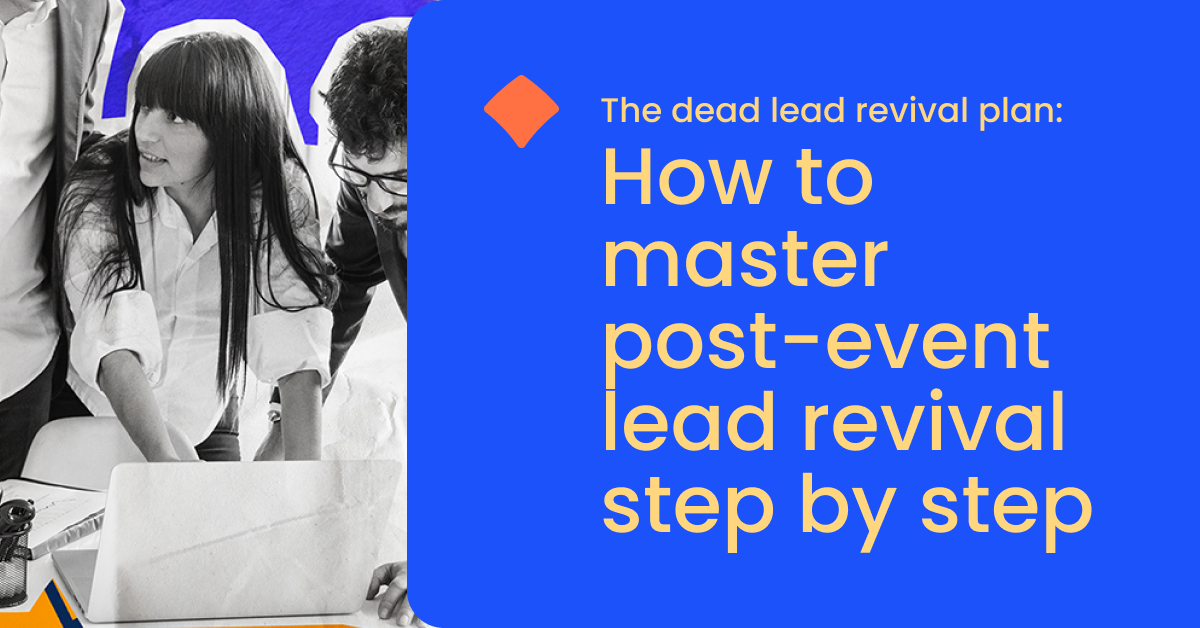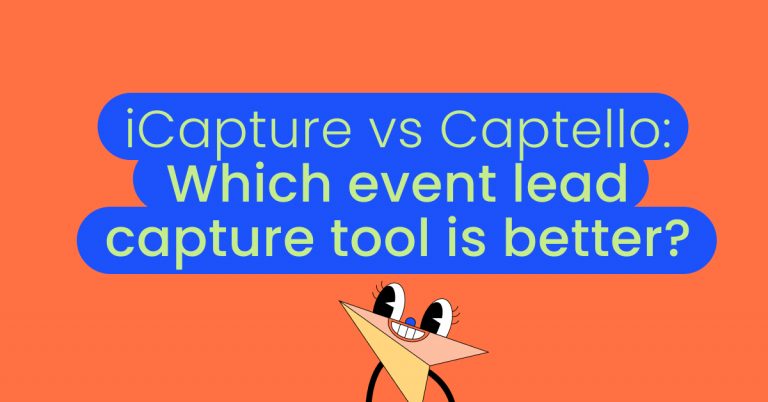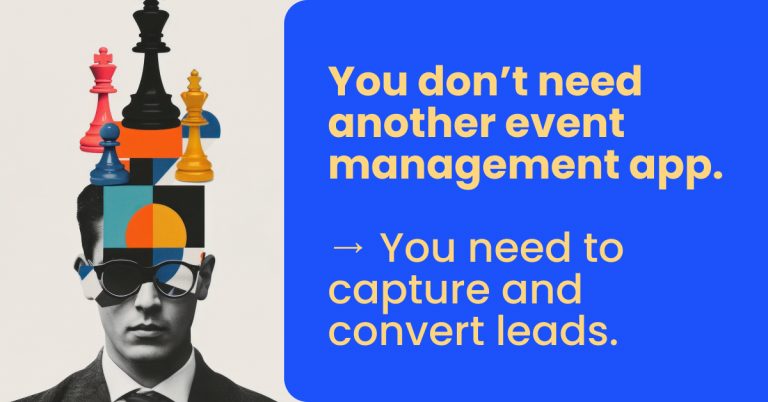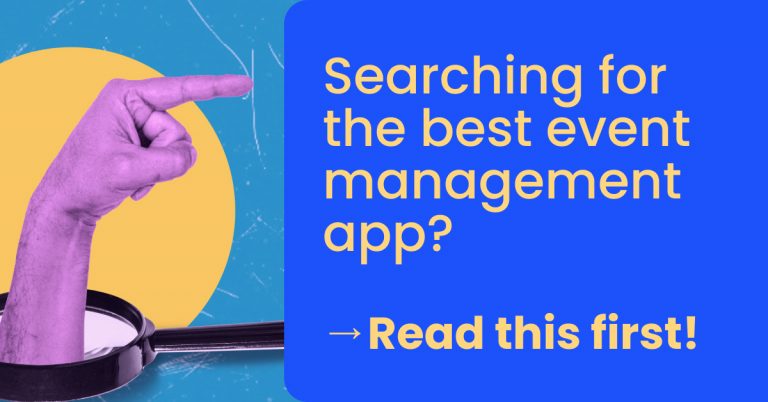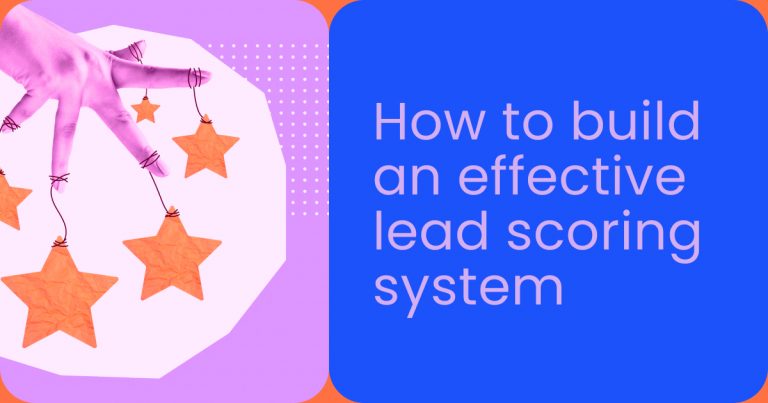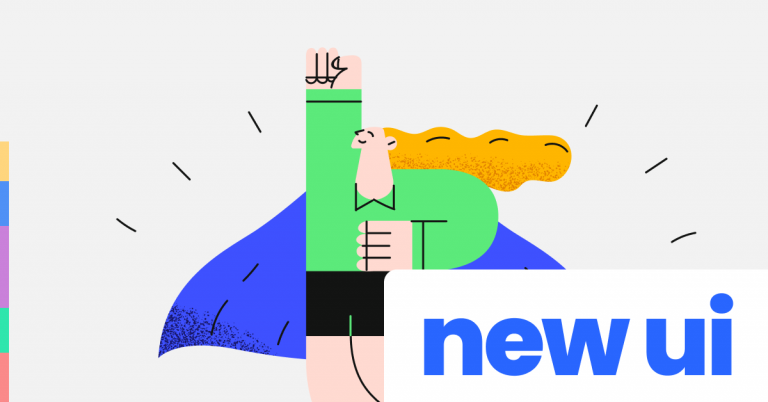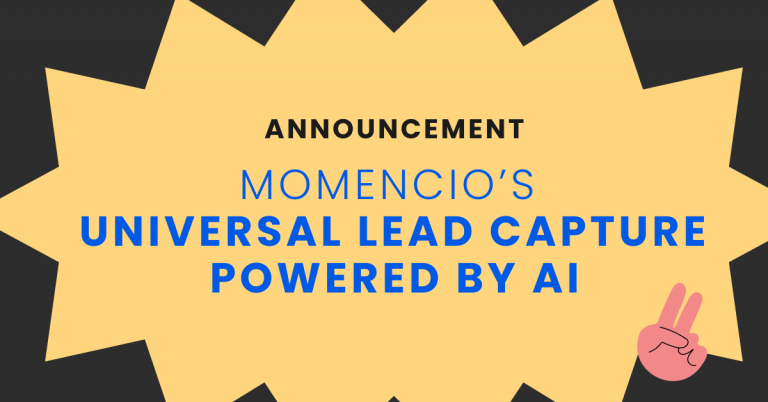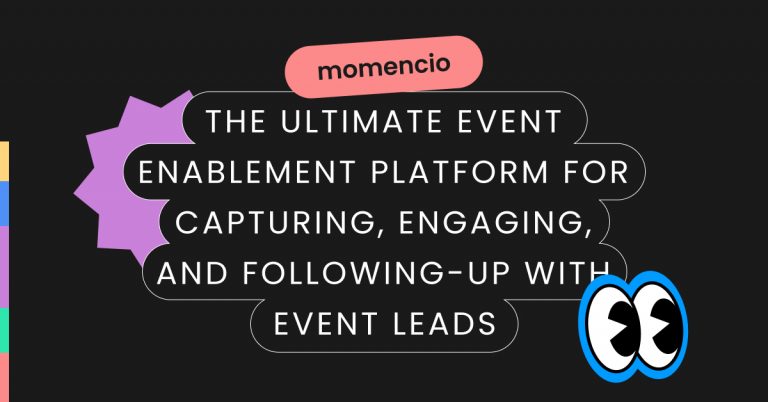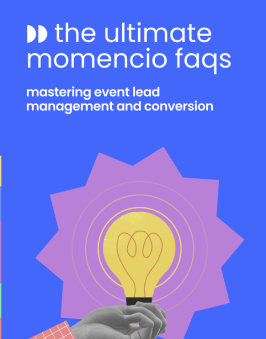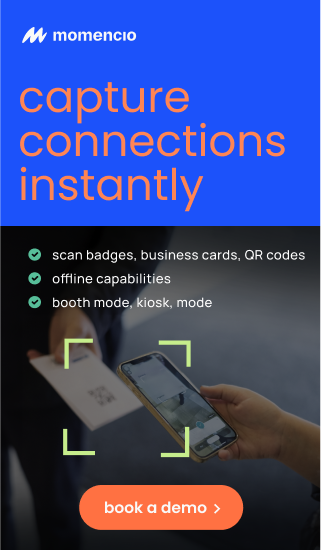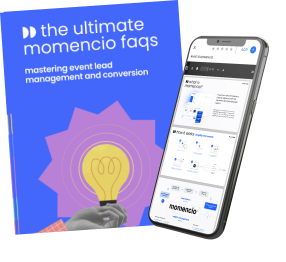Your event is over, and you’ve collected hundreds—maybe even thousands—of leads. But now, weeks have passed, and your inbox is full of unresponsive contacts. Sound familiar? You’re not alone. More than 80% of trade show leads are never followed up on properly—and those that are, often receive generic, uninspiring messages that lead to nothing.
So, what happens to these cold leads? Most get lost in the void of the CRM, never to be contacted again. But here’s the truth: just because a lead has gone quiet doesn’t mean it’s a lost cause. With the right post-event lead revival strategy, you can reignite interest, create meaningful engagement, and turn those forgotten contacts into sales-ready opportunities.
TL;DR
Most leads go cold not because they aren’t interested but because they aren’t nurtured correctly. Post-event lead revival requires strategic follow-ups, valuable content, and multi-channel engagement. This guide will show you how to bring “dead” leads back to life and convert them into sales opportunities.
This guide breaks down a proven step-by-step process to bring cold leads back to life and ensure your event investment pays off long after the booths are packed away.
Step 1: Diagnose the cause – Why leads go cold after an event
Before reviving a cold lead, you need to understand why it went cold in the first place. Leads don’t disappear randomly—there’s always a reason why they lost interest, failed to respond, or never followed through after an event. Identifying the root cause is the first step to crafting a strategy that works.
Common reasons leads go cold
❌ Poor or delayed follow-up: If your follow-up took too long, the lead may have lost interest, forgotten the conversation, or engaged with a competitor who reached out faster. Research shows that 78% of leads convert with the first company to follow up—so timing is everything.
❌ Lack of personalization: If your email or call sounded like a generic, copy-paste message, the lead likely felt unimportant or disengaged. Personalized messages get 6x higher engagement than templated, one-size-fits-all outreach.
❌ No clear value proposition: If your initial interaction or follow-up didn’t clearly communicate what’s in it for them, the lead had no reason to continue the conversation. People respond when they see a clear benefit or solution to their problem.
❌ They weren’t sales-ready: Some leads were curious but not ready to buy. That doesn’t mean they’re lost forever—just that they need to be nurtured until they are. Companies that excel at lead nurturing generate 50% more sales-ready leads at a 33% lower cost than those that don’t.
How to diagnose and categorize your cold leads
To successfully revive dead leads, categorize them into one of three groups based on why they went cold:
1️. “Forgotten but interested” leads: These are contacts who likely had genuine interest but never received a compelling enough reason to continue the conversation. They can often be re-engaged with a strong value-driven follow-up.
2️.“Not ready yet” leads: These leads were interested but needed more time to make a decision. Rather than pushing for an immediate sale, these leads should be nurtured with valuable content, case studies, and industry insights.
3️. “Lost to a competitor” leads: These leads engaged at the event but ultimately chose another solution. However, they’re not a lost cause—stay in touch with them, as they may reconsider if their current choice doesn’t meet expectations.
The next step: Building a lead revival strategy
Once you’ve diagnosed why leads went cold, you can tailor your approach to re-engage them effectively. The next step is segmenting and prioritizing leads to determine which ones are worth reviving and how to approach them.
Step 2: Segment and prioritize – Identifying which leads are worth reviving
Not all cold leads are created equal. Some require just a gentle nudge to move forward, while others need long-term nurturing before they become sales-ready. That’s why segmenting and prioritizing leads is essential—so you focus your efforts where they will yield the highest return.
The three lead categories: Who is worth reviving?
To build an effective post-event lead revival strategy, categorize your leads into three key groups:
1️. High-priority leads – The fast-track prospects
These leads showed strong interest during the event, engaged in meaningful conversations, and perhaps even expressed intent to buy. They are the easiest to convert but might have gone cold due to delayed follow-up, competing priorities, or lack of urgency. These leads require immediate and highly personalized outreach to reignite their interest.
2️. Mid-priority leads – The nurture opportunities
These leads engaged at the event but didn’t express immediate purchase intent. They might have signed up for a demo, attended a session, or interacted with your team but need more education, proof, or value-driven content before making a decision. A nurture campaign with case studies, industry insights, and problem-solving content can bring them back to life.
3️. Low-priority leads – The long-term prospects
These leads may have stopped by your booth but showed minimal engagement. While they are not immediate opportunities, they shouldn’t be discarded. A slow-burn nurture campaign can keep your brand top-of-mind, ensuring that when the time is right, your company is their first choice.
How to prioritize lead revival efforts
Once leads are segmented, it’s time to prioritize outreach so that your sales team focuses their energy on high-value opportunities first. Here’s how:
✅ Start with high-priority leads: These leads should receive immediate, one-on-one outreach with a highly personalized email, a LinkedIn message, or a phone call. Reference your past conversation and offer something of value, such as a tailored solution, a discount, or an exclusive resource.
✅ Engage mid-priority leads with value-driven content: Instead of a hard sales pitch, focus on educating and nurturing these leads. Send them an exclusive whitepaper, invite them to a webinar, or share success stories that align with their pain points.
✅ Keep low-priority leads in your ecosystem: Even if these leads aren’t ready now, keep them engaged with occasional check-ins, industry reports, and event invitations. A well-placed retargeting ad or email drip campaign can bring them back to life when the timing is right.
Automation vs. manual outreach: Striking the balance
While automation can help scale lead revival efforts, high-priority leads require a human touch. The best approach is a hybrid strategy:
- Use automation for low and mid-priority leads with email sequences and content-driven engagement.
- Deploy manual outreach for high-priority leads to personalize messaging and create real conversations.
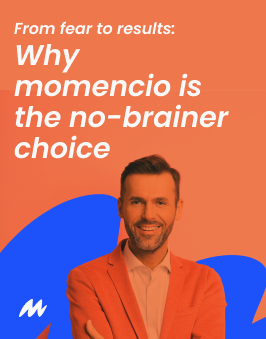
Step 3: The perfect re-engagement message – Crafting emails, calls, and LinkedIn outreach that work
Once you’ve diagnosed why a lead went cold and categorized them accordingly, the next step is crafting a message that cuts through the noise. Many post-event follow-ups fail because they are either too generic, too pushy, or simply uninspiring. Your goal is to create a message that rekindles interest, provides value, and invites engagement.
What makes a great re-engagement message?
A compelling message should be:
✅ Personalized – Reference past interactions, their company, or specific needs.
✅ Value-driven – Offer something useful like a resource, insight, or special opportunity.
✅ Conversational – Avoid sounding robotic or overly scripted.
✅ Action-oriented – Encourage a response with a clear next step.
Email template: Re-engaging a cold lead
Subject: Still interested in [solution/offering]? Let’s reconnect!
Hi [First Name],
We met at [Event Name], and I really enjoyed our conversation about [specific topic]. Since then, I wanted to follow up to see if [challenge they mentioned] is still a priority for your team.
I thought you might find this [resource: case study, webinar, article] helpful—it highlights how companies like [theirs] have tackled [pain point]. If you’d like, I’d be happy to schedule a quick call to discuss how we can support your goals.
Would [specific date/time] work for you? Let me know what’s best for you. Looking forward to reconnecting!
Best,
[Your Name]
[Your Company]
LinkedIn message template: Re-engaging through social
Hi [First Name],
We connected at [Event Name], and I wanted to follow up on our discussion about [specific challenge]. I came across this [article/webinar/case study] that I thought you might find valuable. Would love to hear your thoughts!
Also, if you’re still exploring [solution], I’d be happy to chat and share how other companies in [their industry] are seeing success. Let me know if you’re open to a quick conversation. Looking forward to catching up!
Call script: Re-engaging leads via phone
Introduction:
“Hi [First Name], this is [Your Name] from [Your Company]. We met at [Event Name], and I wanted to follow up on our conversation about [specific topic].”
Engagement hook:
“I remember you mentioning [pain point]. I recently worked with a company that had a similar challenge, and I’d love to share how they solved it. Are you still dealing with this issue?”
Call to action:
“If you’re open to it, I’d love to schedule a quick call or send over some helpful insights. Would you be available later this week?”
How to follow up if they don’t respond
Not every lead will reply immediately. Here’s how to stay persistent without being annoying:
- Day 1: Send the first re-engagement email or LinkedIn message.
- Day 3-4: Follow up with a different value-add—perhaps a webinar invite or new insight.
- Day 7-10: Try a phone call or a LinkedIn voice note for a more personal touch.
- Day 14+: If there’s still no response, send a “final check-in” email, letting them know you’re happy to connect when the timing is right.
Step 4: Multi-channel follow-up – How to use email, social, and retargeting effectively
A single follow-up email won’t always do the trick. In today’s digital world, leads engage across multiple platforms—email, LinkedIn, social media, and even remarketing ads. A multi-channel approach ensures that your brand stays top-of-mind and increases your chances of reviving cold leads.
Why a multi-channel follow-up strategy works
- People communicate differently—some prefer email, while others are more responsive on LinkedIn or phone calls.
- It keeps your brand visible—consistent, value-driven touchpoints create recognition and trust.
- Increases response rates—multi-channel outreach leads to higher engagement than relying on a single method.
How to execute an effective multi-channel follow-up
1. Email outreach: The foundation of re-engagement
Email is still the most direct way to follow up, but to stand out, make sure your emails are:
✅ Short and personalized – Reference past conversations, their company, or pain points.
✅ Value-driven – Provide something useful, like an exclusive industry report or an invite to a webinar.
✅ Actionable – End with a clear call to action, such as a request to book a call or respond with feedback.
2. LinkedIn follow-up: Building relationships beyond the inbox
Many professionals ignore cold emails but are active on LinkedIn. Try these LinkedIn follow-up strategies:
- Send a connection request with a personalized message referencing your event conversation.
- Engage with their posts—commenting on or liking their content increases visibility before outreach.
- Use LinkedIn voice messages or video messages—these stand out more than standard text-based outreach.
3. Retargeting ads: Stay on their radar
Retargeting is a powerful yet often overlooked tool in post-event lead revival. Running ads on LinkedIn, Facebook, or Google keeps your brand visible and subtly reminds leads of your value. To make retargeting work:
- Use event-specific landing pages that match the messaging from your follow-up emails.
Showcase customer testimonials or case studies relevant to their industry. - Create urgency—limited-time offers or event recap content can prompt engagement.
- 4. Phone calls: The personal touch that drives conversions
A well-timed phone call can significantly increase conversion rates, especially for high-priority leads. Keep your call structured:
- Remind them where you met and what was discussed.
- Ask open-ended questions to gauge their current challenges.
- Provide immediate value—offer a solution or suggest an actionable next step.
How to track and optimize multi-channel follow-up efforts
A multi-channel approach is only effective if it’s tracked and optimized. Use CRM tools to:
- Monitor response rates from different channels.
- Identify which touchpoints lead to conversions.
- Automate reminders to follow up across multiple platforms.
A strategic multi-channel approach ensures that your post-event lead revival isn’t just a one-time effort but a well-structured system designed for maximum re-engagement and conversion.
Step 5: Add value, not just noise – Offering insights, resources, and personalization to warm up leads
One of the biggest mistakes in post-event follow-up is reaching out without offering real value. Sending generic emails that simply say, “Just checking in” or “Following up on our last conversation” often leads to low engagement. Instead, your follow-ups should deliver meaningful insights, exclusive resources, or personalized solutions that make the lead feel like they are gaining something valuable from continuing the conversation.
How to add real value to your follow-ups
1. Provide exclusive industry insights
Sharing relevant, data-driven insights makes your follow-ups more compelling. Consider:
- A report or whitepaper with industry trends.
- Exclusive data from your company’s research.
- A concise summary of key takeaways from the event.
Example:
“Hi [First Name], I came across this recent study on [industry trend] and thought of our conversation at [Event Name]. It highlights some fascinating shifts in [specific topic]. I’d love to hear your thoughts on it—let me know if you’d be interested in discussing this further!”
2. Share success stories and case studies
Instead of just saying, “We can help you,” show them how you’ve helped similar companies. A well-placed case study or success story demonstrates real-world value.
Example:
“[First Name], when we spoke at [Event Name], you mentioned struggling with [pain point]. I wanted to share a quick case study on how [Company Name] tackled the same issue using [solution]. Would love to hear your thoughts—does this align with what you’re facing?”
3. Offer personalized solutions
If a lead showed interest in a specific feature or solution at the event, follow up with tailored recommendations that address their unique needs.
Example:
“Based on what we discussed at [Event Name], I think [specific feature or solution] might be a great fit for your team. Here’s a quick video explaining how it works. Let’s set up a time to dive deeper if you’d like to explore further!”
4. Invite them to an exclusive webinar or demo
Rather than asking for a sales call right away, invite them to a low-commitment event that adds value. A webinar, product demo, or industry roundtable is a great way to keep them engaged without pressure.
Example:
“We’re hosting a webinar on [topic] featuring [expert name]—I think you’d find it incredibly valuable based on what we discussed at [Event Name]. Would you like me to send over the details?”
The key takeaway: Give before you ask
Every interaction should offer something valuable before making an ask. Leads are far more likely to engage when they feel like they are gaining insights, solutions, or opportunities rather than just being sold to.
Step 6: The persistence strategy – Timing and frequency of follow-ups that get results
Persistence is one of the most underrated yet crucial aspects of post-event lead revival. Many sales teams give up after one or two follow-ups, assuming a lack of response means disinterest. In reality, it often takes multiple touchpoints to re-engage a lead effectively. Studies show that 80% of sales require at least five follow-ups—yet most sales reps stop after just two.
Why persistence matters in post-event lead revival
- Leads are busy—their lack of response doesn’t necessarily mean they aren’t interested.
- They may need more nurturing before making a decision.
- Your competitors are following up too—consistent outreach keeps your brand top-of-mind.
- It builds trust—demonstrating continued interest without being pushy creates a positive impression.
The ideal follow-up timeline
A well-structured persistence strategy ensures you stay engaged without overwhelming the lead. Here’s a proven timeline to follow:
📅 Day 1-2 – Send the first personalized follow-up (email or LinkedIn message).
📅 Day 4-5 – Send a second follow-up, adding a new piece of value (case study, industry report, or webinar invite).
📅 Day 7-10 – Make a phone call or send a LinkedIn voice message for a more personal touch.
📅 Day 14+ – Send a final check-in email with a soft close, allowing them to re-engage on their own terms.
If there’s still no response after four to five touchpoints, move the lead into a long-term nurture sequence rather than continuing direct outreach.
How to be persistent without being annoying
There’s a fine line between being consistent and being pushy. Here’s how to follow up effectively:
✅ Space out your follow-ups—avoid sending messages every day.
✅ Vary your messaging—don’t send the same follow-up repeatedly.
✅ Always offer value—each message should provide new insights, not just ask for a meeting.
✅ Use different channels—mix email, LinkedIn, and phone outreach for better engagement.
✅ Know when to pause—if a lead hasn’t responded after multiple attempts, move them into a nurture campaign.
Persistence pays off
Most leads won’t respond immediately, but that doesn’t mean they’re lost. With a structured persistence strategy, you increase your chances of re-engaging and converting more post-event leads.
Step 7: Automate without losing the human touch – How to scale lead revival without sounding robotic
Automation can be a game-changer for post-event lead revival, allowing teams to scale outreach efforts and maintain consistency. However, the challenge lies in ensuring that automated follow-ups feel personalized, engaging, and human rather than robotic and impersonal. The right balance between automation and human touch ensures that leads remain engaged without feeling like they are just another name on a mass email list.
Why automation matters in post-event lead revival
- Saves time and resources by eliminating manual data entry and repetitive tasks.
- Ensures consistency so no leads slip through the cracks.
- Allows for data-driven decisions by tracking responses, interactions, and engagement rates.
- Improves scalability so that teams can follow up with more leads efficiently.
How to personalize automation for better engagement
- Use dynamic fields for personalized emails – Instead of generic messages, leverage CRM integrations to insert lead-specific details such as their name, company, or topic of interest discussed at the event.
- Segment automated campaigns based on lead status – Send different messages to leads based on their engagement level, rather than a one-size-fits-all approach.
- Incorporate behavior-based triggers – Automate follow-ups based on a lead’s interaction, such as opening an email, clicking a link, or watching a video.
- Mix automation with manual touchpoints – Complement automated sequences with a personal LinkedIn message, a phone call, or a handwritten note to create a more authentic engagement experience.
- A/B test different automation sequences – Analyze response rates to optimize subject lines, email formats, and timing.
Examples of effective automated workflows
- Immediate post-event email thanking the lead for visiting your booth and providing a relevant resource.
- Follow-up email with a case study or webinar invite to nurture interest further.
- Reminder email if the lead has not engaged after a few days, offering additional value.
- Personalized check-in message from a sales rep for leads that showed strong interest.
- Re-engagement campaign for leads that remain unresponsive, offering a new incentive or content.
Striking the balance: Automation plus personal connection
Automation is powerful, but it should never replace real human interaction. The most effective lead revival strategies use automation to handle routine tasks while leaving room for genuine, personalized conversations. Combining both ensures that leads feel valued rather than processed through a system.
Measuring success – How to track revived leads and optimize future event follow-ups
Tracking the effectiveness of your post-event lead revival strategy is critical for optimizing future efforts. Without proper measurement, it’s impossible to know which approaches are working and which need adjustment. The key is to establish clear metrics, use data-driven insights, and continuously refine your process.
Key metrics to track revived leads
- Response rate – Measure the percentage of cold leads who responded to your outreach efforts.
- Engagement rate – Track email opens, link clicks, and social media interactions.
- Conversion rate – Assess how many revived leads move forward in the sales pipeline.
- Time to re-engagement – Measure how long it takes to revive a lead from initial follow-up to meaningful engagement.
- Channel effectiveness – Analyze which follow-up methods (email, LinkedIn, phone calls, retargeting ads) yield the highest response rates.
Using analytics tools to optimize lead revival efforts
- CRM tracking – Leverage CRM dashboards to monitor lead status and follow-up performance.
- Email marketing reports – Use analytics from email platforms to evaluate open and click-through rates.
- A/B testing – Experiment with different subject lines, messaging styles, and follow-up cadences to identify the most effective strategies.
- Lead scoring – Implement a scoring system to rank revived leads based on their level of interest and likelihood to convert.
Continuous improvement: Refining your post-event follow-up process
- Review and analyze results – Conduct a post-mortem analysis to assess what worked and what didn’t.
- Refine messaging – Adjust email templates, call scripts, and LinkedIn messages based on engagement patterns.
- Enhance segmentation – Use lead behavior insights to fine-tune your segmentation strategy.
- Improve automation sequences – Adjust workflow timing and messaging to better align with lead responsiveness.
- Incorporate feedback loops – Gather input from sales teams on lead quality and common objections encountered during follow-ups.
Data-driven optimization leads to better results
By systematically measuring your lead revival performance, you can identify areas for improvement, refine outreach tactics, and increase conversion rates. Every event presents a learning opportunity, and with the right data-driven approach, your post-event strategy will become more efficient and effective over time.
Interesting facts from research
- 80% of leads generated at trade shows are never followed up on.
- 78% of customers buy from the first company that follows up with them.
- Event marketers who use automation see a 451% increase in qualified leads.
- Companies that nurture leads effectively generate 50% more sales-ready leads at a 33% lower cost.
- A personalized follow-up email can increase response rates by 6x compared to generic outreach.
- Leads contacted within five minutes of engagement are 9x more likely to convert.
- B2B buyers consume an average of 13 pieces of content before making a purchase decision.
- Using LinkedIn for post-event follow-ups results in a 45% higher engagement rate than email alone.
- Companies that integrate CRM with event follow-up strategies see a 29% increase in deal closure rates.
- Personalized video messages in follow-ups boost response rates by 26%.
FAQs – Answering the most common questions about post-event lead revival
- How long should I wait before following up with event leads?
- The best time to follow up is within 24 to 48 hours after the event. Studies show that leads contacted within this timeframe are significantly more likely to convert. If you wait too long, they may forget the conversation or engage with a competitor.
- What if a lead doesn’t respond to my first follow-up?
- How many times should I follow up before giving up on a lead?
- A good rule of thumb is at least five touchpoints across different channels. Most sales happen after multiple interactions, so persistence is key. If a lead remains unresponsive after five follow-ups, consider adding them to a long-term nurture campaign rather than removing them entirely.
- Should I use automation for post-event follow-ups?
- Yes, but with personalization. Automation helps scale outreach efficiently, but messages should include dynamic fields (e.g., name, company, discussion topics) to feel authentic. Pair automation with manual outreach, such as LinkedIn messages or phone calls, to enhance engagement.
- How can I tell if my post-event lead revival strategy is working?
- Track key metrics such as email open rates, response rates, meeting bookings, and conversion rates. Analyzing which touchpoints generate the most engagement helps refine your approach and improve future results.
- What if I didn’t collect enough details about a lead at the event?
- Use tools like LinkedIn, company websites, and CRM lead enrichment features to gather additional information. Even a basic follow-up message referencing your brief interaction can restart the conversation.
- What type of content should I include in my follow-ups?
- What’s the best way to revive leads that have gone cold for months?
- A re-engagement campaign using a personalized approach works best. Send an email or LinkedIn message referencing your last interaction and offering an update, such as a new solution, industry trend, or exclusive event invitation.
- Should I continue following up with unresponsive leads indefinitely?
- Not indefinitely, but instead of discarding them, move unresponsive leads into a long-term nurture campaign. Send them periodic value-driven emails and event invites so that when they’re ready, your company remains top of mind.
- What’s the biggest mistake companies make with post-event lead follow-ups?
- The biggest mistake is sending generic, one-size-fits-all follow-ups or stopping outreach too soon. Personalized, multi-channel engagement over time yields far better results than a single mass email blast.
Conclusion & call to action – Final steps to ensure post-event lead revival success
The leads you capture at an event represent real opportunities, but only if they are nurtured correctly. Many companies struggle with post-event lead revival, assuming that unresponsive leads are a lost cause. The truth is, most leads don’t convert simply because they weren’t followed up with effectively.
A structured approach—combining timely follow-ups, multi-channel engagement, personalized outreach, and strategic automation—significantly increases the chances of reviving cold leads and turning them into customers.
Key takeaways for post-event lead revival success:
- Follow up quickly – The sooner you reach out, the more likely you are to re-engage leads before they lose interest.
- Segment your leads – Prioritize them based on interest level and tailor follow-ups accordingly.
- Use a multi-channel strategy – Don’t rely solely on email; mix in LinkedIn, phone calls, and retargeting ads.
- Provide value – Share insights, industry reports, and solutions rather than just sales pitches.
- Be persistent but strategic – Most sales happen after multiple touchpoints, so follow up consistently without overwhelming the lead.
- Leverage automation wisely – Use automation to scale outreach while maintaining personalization and authenticity.
- Track performance and optimize – Analyze response rates, conversions, and engagement data to refine future follow-ups.
Turn your event leads into real revenue
Your job isn’t over when the event ends. In fact, the real work begins after the booths are packed up. Companies that have a clear, structured follow-up plan generate higher conversion rates, greater customer engagement, and a higher return on investment from their event efforts.
Now it’s time to put these strategies into action. Don’t let your hard-earned leads go cold—start implementing a winning post-event lead revival strategy today.
